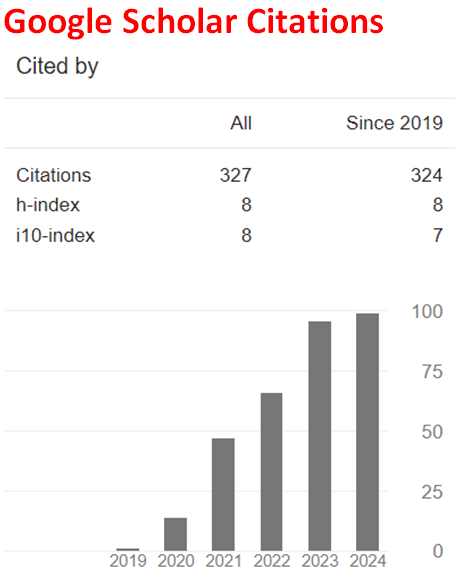Effect of Aluminum on 1,3,5,5-tetranitrohexahydropyrimidine (DNNC) - A DFT Treatment
Abstract
DNNC is an explosive as well as an oxidant for propellants and pyrotechnics. It possesses C-NO2 and N-NO2 bonds. In the present study, DNNC and aluminum interaction has been investigated within the limitations of density functional theory at the level of unrestricted B3LYP/6-31++G(d,p). The composites having formula of DNNC+Al and DNNC+2Al are considered. Since aluminum has an unpaired electron in the ground state, various multiplicities arise for the composites of present interest. Some geometrical, physico chemical, quantum chemical and some spectral data have been obtained and discussed. The calculations within the constraints of the theory and the basis set employed have indicated that DNNC+Al (doublet) keeps its structural integrity but DNNC+2Al composite either in singlet or triplet case expels one of the geminally substituted NO2 groups. However, the aluminum atom in each case acquires different kind of charge. The N-NO2 bonds remain intact in the presence of aluminum.
Downloads
References
Boileau, J., Piteau, M., & Jacob, G. (1990). Short communication – notice. Synthèse de la 1,3,5,5-tetranitrohexahydropyrimidine, Propellants Explos. Pyrotech., 15(1), 38-38. https://doi.org/10.1002/prep.19900150111
Agrawal, J.P. (2010). High energy materials, Weinheim: Wiley-VCH. https://doi.org/10.1002/9783527628803
Dorothy, A.C., & Horst, G.A. (1982). Nitrolysis of dialkyl tert-butylamines. J. Org. Chem., 47(12), 2474-2476. https://doi.org/10.1021/jo00133a047
Sinditskii, V.P., Smirnova, A.D., Vu, T.Q., Filatov, S.A., Serushkin, V.V., & Rudakov, G.F. (2020). Thermal decomposition of 1,3,5,5-tetranitrohexahydropyrimidine: a new type of autocatalysis that persists at high temperatures. Propellants Explos. Pyrotech., 45, 1-10. https://doi.org/10.1002/prep.202000259
Zhang, L.-J., Ji, Y.-P., Chen, B., Ding, F., Li, D.-P., & Liu, W.-X. (2012). Synthesis of 1,3,5,5-tetranitrohexahydropyrimidine with high yield. Chinese J. Energ. Mater., 20, 441-444.
Levins, D.L., Bedford, C.D., & Coon, C.L. (1982). 1,3,5,5-Tetranitrohexahydro-pyrimidine (DNNC), U.S. Patent 4,346,222 (1982), SRI International, USA (24 Aug. 1982), SRI International, Menlo Park, California, US.
Shackelford, S.A., & Goldman, J.F. (1995). Heat of fusion for 1,3,5,5- tetranitrohexahydropyrimidine (DNNC) and its DNNC-d6 deuterium labeled analogue. Propellants Explos. Pyrotech., 20(1), 1-4. https://doi.org/10.1002/prep.19950200102
Oyumi, Y., Brill, T.B., Rheingold, A.L., & Haller, T.M. (1985). Crystal structure and molecular dynamics of the energetic nitramine 1,3,5,5-tetranitrohexahydropyrimidine and a comparison with 1,3,3,5,7,7-hexanitro-1,5-diazacyclooctane and 1,3,3-trinitroazetidine. J. Phys. Chem., 89, 4317-4324
Shackelford, S.A., & Goldman, J.F. (1992). Intramolecular mechanistic thermochemical decomposition studies of 1,3,5,5-tetranitrohexahydropyrimidine (DNNC) and its deuterium labeled analogues, 203rd National American Chemical Society Meeting, San Francisco, CA, 5-10 April, [Abstract, 1992] American Chemical Society, 1155 16th St. N.W., Washington, D.C. 20036 (USA).
Shackelford, S.A., Menapace, J.A., & Goldman, J.F. (2007). Liquid state thermo chemical decomposition of neat 1,3,5,5-tetranitrohexahydropyrimidine (DNNC) and its DNNC-d2, DNNC-d4, DNNC-d6 structural isotopomers: Mechanistic entrance into the DNNC molecule. Thermochimica Acta, 464(1-2), 42-58. https://doi.org/10.1016/j.tca.2007.08.005
Hendrickson, S.A. & Shackelford, S.A. (2006). Solid state thermo chemical decomposition of neat 1,3,5,5-tetranitrohexahydropyrimidine (DNNC) and its DNNC-d6 perdeuterio-labeled analogue. Thermochimica Acta, 440(2), 146-155. https://doi.org/10.1016/j.tca.2005.11.007
Roos, B.D., & Brill, T.B. (2003). Thermal decomposition of energetic materials 84: pyrolysis of 5-substituted 1,3,5-trinitrohexahydropyrimidines. Propellants Explos. Pyrotech., 28(2), 65-71. https://doi.org/10.1002/prep.200390010
Keshavarz, M.H. (2005). New method for predicting detonation velocities of aluminized explosives. Combustion Flame, 142, 303-307. https://doi.org/10.1016/j.combustflame.2005.03.011
Taylor, J. (1959). Solid propellant and exothermic compositions, London: George Newnes Ltd.
Stewart, J.J.P. (1989). Optimization of parameters for semi empirical methods I. J. Comput. Chem., 10, 209-220. https://doi.org/10.1002/jcc.540100208
Stewart, J.J.P. (1989). Optimization of parameters for semi empirical methods II. J. Comput. Chem., 10, 221-264. https://doi.org/10.1002/jcc.540100209
Leach, A.R. (1997). Molecular modeling. Essex: Longman.
Kohn, W., & Sham, L.J. (1965). Self-consistent equations including exchange and correlation effects. Phys. Rev., 140, 1133-1138. https://doi.org/10.1103/PhysRev.140.A1133
Parr, R.G., & Yang, W. (1989). Density functional theory of atoms and molecules. London: Oxford University Press.
Becke, A.D. (1988). Density-functional exchange-energy approximation with correct asymptotic behavior. Phys. Rev. A, 38, 3098-3100. https://doi.org/10.1103/PhysRevA.38.3098
Vosko, S.H., Wilk, L., & Nusair, M. (1980). Accurate spin-dependent electron liquid correlation energies for local spin density calculations: a critical analysis. Can. J. Phys., 58, 1200-1211. https://doi.org/10.1139/p80-159
Lee, C., Yang, W., & Parr, R.G. (1988). Development of the Colle-Salvetti correlation energy formula into a functional of the electron density. Phys. Rev. B, 37, 785-789. https://doi.org/10.1103/PhysRevB. 37.785
Cramer, C.J. (2004). Essentials of computational chemistry. Chichester, West Sussex: Wiley.
SPARTAN 06 (2006). Wavefunction Inc. Irvine CA, USA.
Durant, P.J., & Durant, B. (1972). Introduction to advanced inorganic chemistry. London: Longman.
Stark, J.G., & Wallace, H.G. (1982). Chemistry data book (2nd ed.). London: John Murray Pub.
Türker, L. (2021). Effect of selenium on TNAZ molecule - A DFT treatment. Earthline Journal of Chemical Sciences, 6(1), 119-135. https://doi.org/10.34198/ejcs.6121.119135
Türker, L. (2020). A DFT treatment of some aluminized 1,3,3-trinitroazetidine (TNAZ) systems-A deeper look. Earthline Journal of Chemical Sciences, 3(2), 121-140. https://doi.org/10.34198/ejcs.3220.121140
Barrow, G.M. (1962). Introduction to molecular spectroscopy. Tokyo: McGraw-Hill (Int. Student Ed.).
Harris, D.C., & Bertolucci, M.D. (1978). Symmetry and spectroscopy: an introduction to vibrational and electronic spectroscopy. New York: Oxford University Press.
Anbu, V., Vijayalakshmi, K.A., Karunathan, R., Stephen, A.D., & Nidhin, P.V. (2019). Explosives properties of high energetic trinitrophenyl nitramide molecules: A DFT and AIM analysis. Arabian Journal of Chemistry, 12(5), 621-632. https://doi.org/10.1016/j.arabjc.2016.09.023
Badders, N.R., Wei, C., Aldeeb, A.A., Rogers, W.J., & Mannan, M.S. (2006). Predicting the impact sensitivities of polynitro compounds using quantum chemical descriptors. Journal of Energetic Materials, 24, 17-33. https://doi.org/10.1080/0737065050037432

This work is licensed under a Creative Commons Attribution 4.0 International License.


